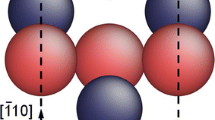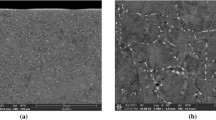Abstract
In some aluminum alloys, the observed plastic anisotropy cannot be explained solely by the measured Taylor factor variation. Qualitatively, it has been suggested that this difference results from a secondary effect due to plate-shaped precipitates. Models addressing the effect of plastically-deforming and elastically-deforming precipitates have been previously proposed. In the present article, explicit solutions of the anisotropic strengthening increment are presented for the case of plate-shaped precipitates. These solutions allow a quantitative consideration of the effect of precipitates on different habit planes and of the effect due to stress aging. Generally, in fcc materials, precipitates on {100} habit planes are predicted to minimize the anisotropy due to texture; precipitates on {111} habit planes are predicted to accentuate the anisotropy due to texture; and precipitates on other habit planes are predicted to produce a minor effect resulting from an averaging over a greater number of crystallographcally equivalent habit planes. Stress aging to alter the relative orientation distribution of a single precipitate type is predicted to produce only slight changes in the plastic anisotropy. Larger effects on the yield variation will be observed when stress aging alters the relative volume fractions of two precipitate types on different habit planes.
Similar content being viewed by others
References
W.F. Hosford and R.H. Zeisloft: Metall. Trans., 1972, vol. 3, pp. 113–21.
L.M. Brown and W.M. Stobbs: Phil. Mag., 1971, vol. 23, pp. 1185–99.
L.M. Brown and D.R. Clarke: Acta Metall., 1975, vol. 23, pp. 821–30.
J.D. Eshelby: Proc. R. Soc., 1957, vol. A241, pp 376–96.
M.F. Ashby: Phil. Mag., 1969, vol. 21, pp. 399–424.
J.S. Kallend, U.F. Kocks, A.D. Rollett, and H.R. Wenk: Mater. Sci. Eng., 1991, vol. A132, pp. 1–11.
G.Y. Chin and W.L. Mammel: Trans. TMS-AIME, 1969, vol. 245, pp. 1211–14.
P. Bate, W.T. Roberts, and D.V. Wilson: Acta Metall., 1981, vol. 29, pp. 1797–1813.
M.T. Lyttle and J.A. Wert: Metall. Mater. Trans., A 1996, vol. 27A, pp. 3503–12.
H. Hargarter, M.T. Lyttle, and E.A. Starke, Jr.: Mater. Sci. Eng. A, 1998, vol. A257, pp. 87–99.
Author information
Authors and Affiliations
Rights and permissions
About this article
Cite this article
Lyttle, M.T., Wert, J.A. Precipitate-induced plastic anisotropy: Explicit solutions of the plastic anisotropy due to plate-shaped precipitates. Metall Mater Trans A 30, 1283–1288 (1999). https://doi.org/10.1007/s11661-999-0277-4
Received:
Issue Date:
DOI: https://doi.org/10.1007/s11661-999-0277-4




